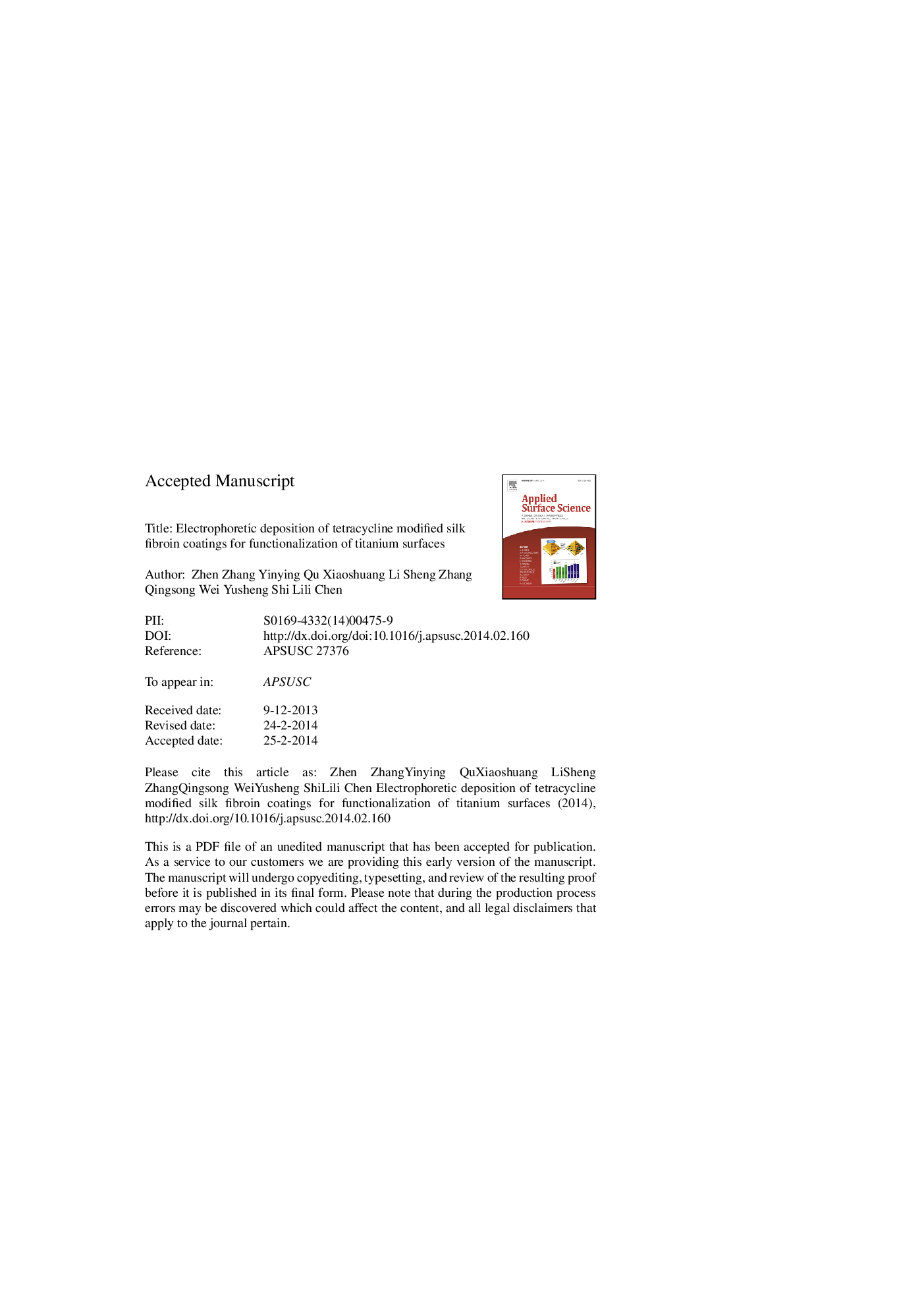| Article ID | Journal | Published Year | Pages | File Type |
|---|---|---|---|---|
| 5359206 | Applied Surface Science | 2014 | 33 Pages |
Abstract
Electrophoretic deposition has been widely used for the fabrication of functional coatings onto metal implant. A characteristic feature of this process is that positively charged materials migrate toward the cathode and can deposit on it. In this study, silk fibroin was decorated with tetracycline in aqueous solution to impart positive charge, and then deposited on negatively titanium cathode under certain electric field. The characterization of the obtained coatings indicated that the intermolecular hydrogen bonds formed between the backbone of silk fibroin and tetracycline molecular. In vitro biological tests demonstrated that osteoblast-like cells achieved acceptable cell affinity on the tetracycline cross-linked silk fibroin coatings, although greater cell viability was seen on pure silk fibroin coatings. The cationic silk fibroin coatings showed remarkable antibacterial activity against gram-positive (Staphylococcus aureus) and gram-negative (Escherichia coli) bacteria. Therefore, we concluded that electrophoretic deposition was an effective and efficient technique to prepare cationic silk fibroin coatings on the titanium surface and that cationic silk fibroin coatings with acceptable biocompatibility and antibacterial property were promising candidates for further loading of functional agents.
Related Topics
Physical Sciences and Engineering
Chemistry
Physical and Theoretical Chemistry
Authors
Zhen Zhang, Yinying Qu, Xiaoshuang Li, Sheng Zhang, Qingsong Wei, Yusheng Shi, Lili Chen,
